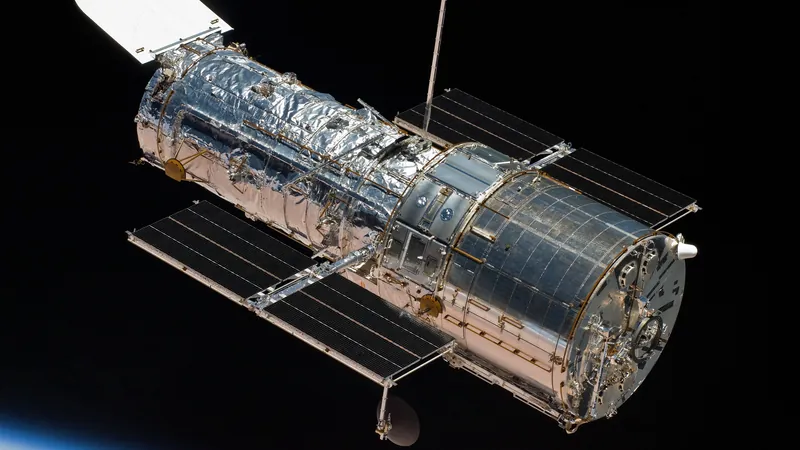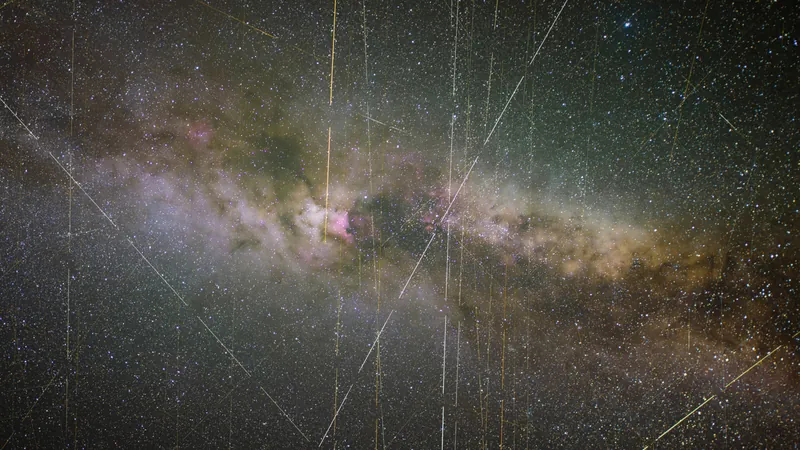
Celebrating 35 Years of Hubble: The Space Telescope That Refuses to Fade
2025-04-24
Author: Yu
The Hubble Space Telescope's Remarkable Journey
Today marks a monumental milestone: the Hubble Space Telescope is celebrating 35 incredible years in orbit! Despite its age, the beloved space telescope shows no signs of decline, continuing to surprise astronomers worldwide.
Jennifer Wiseman, Senior Project Scientist for Hubble at NASA's Goddard Space Flight Center, emphasizes its current prowess, stating, "Hubble is more scientifically productive now than ever before—it's mind-blowing!"
A Historical Marvel in Astronomy
Launched in 1990, the Hubble Space Telescope was a groundbreaking achievement, allowing scientists to observe the universe without the distortion of Earth’s atmosphere. This iconic tool has played a crucial role in some of the most significant astronomical discoveries of recent decades.
Among its achievements, Hubble confirmed the presence of supermassive black holes at the center of massive galaxies and contributed to understanding dark energy through its observations of supernovae. With its deep field images, Hubble has taken humanity further back in time than ever before, revealing 13 billion years of cosmic history.
Rescue Missions and Technical Triumphs
Hubble's journey has not been without challenges. Shortly after its launch, a flaw in its primary mirror was discovered, prompting a daring repair mission by astronauts aboard the Endeavour in 1993. They successfully installed corrective optics, restoring Hubble’s vision.
Subsequent servicing missions continued until 2009, when astronauts made the last visit to upgrade and repair the telescope. Despite some instruments nearing failure, the clever technical team adapted Hubble to operate effectively using just one functioning gyroscope, allowing the telescope to thrive once more.
Collaboration and Continued Discoveries
Hubble's collaboration with various observatories, including the James Webb Space Telescope (JWST), has multiplied its scientific output. This partnership allows astronomers to leverage the complementary strengths of both tools, creating a fuller picture of cosmic history.
Wiseman highlights how this synergy enables an in-depth examination of both nearby galaxies and those from the universe's infancy.
Unlocking the Universe's Secrets
With its extensive archive, Hubble is a treasure trove for scientists, enabling them to study transient phenomena over decades. As researchers dive into this rich dataset, new questions arise, enriching our understanding of the ever-changing cosmos.
The Uncertain Future of Hubble
Alas, Hubble's vibrant legacy won’t last forever. As atmospheric drag gradually diminishes its orbital speed, the telescope is expected to re-enter the atmosphere and burn up in the 2030s.
The scientific community anticipates the loss as an enormous blow, given Hubble's unmatched capabilities. While plans for a true successor are in the pipeline for the 2040s, some propose a robotic mission to boost Hubble to a higher orbit, potentially extending its life and contributions.
A Legacy That Lives On
Although the future may seem uncertain, Hubble's journey remains a beacon of perseverance and discovery. As we celebrate its 35th birthday, we are reminded that it is not just a telescope; it is a symbol of human ingenuity and a window into the vast galaxies that surround us.


 Brasil (PT)
Brasil (PT)
 Canada (EN)
Canada (EN)
 Chile (ES)
Chile (ES)
 Česko (CS)
Česko (CS)
 대한민국 (KO)
대한민국 (KO)
 España (ES)
España (ES)
 France (FR)
France (FR)
 Hong Kong (EN)
Hong Kong (EN)
 Italia (IT)
Italia (IT)
 日本 (JA)
日本 (JA)
 Magyarország (HU)
Magyarország (HU)
 Norge (NO)
Norge (NO)
 Polska (PL)
Polska (PL)
 Schweiz (DE)
Schweiz (DE)
 Singapore (EN)
Singapore (EN)
 Sverige (SV)
Sverige (SV)
 Suomi (FI)
Suomi (FI)
 Türkiye (TR)
Türkiye (TR)
 الإمارات العربية المتحدة (AR)
الإمارات العربية المتحدة (AR)